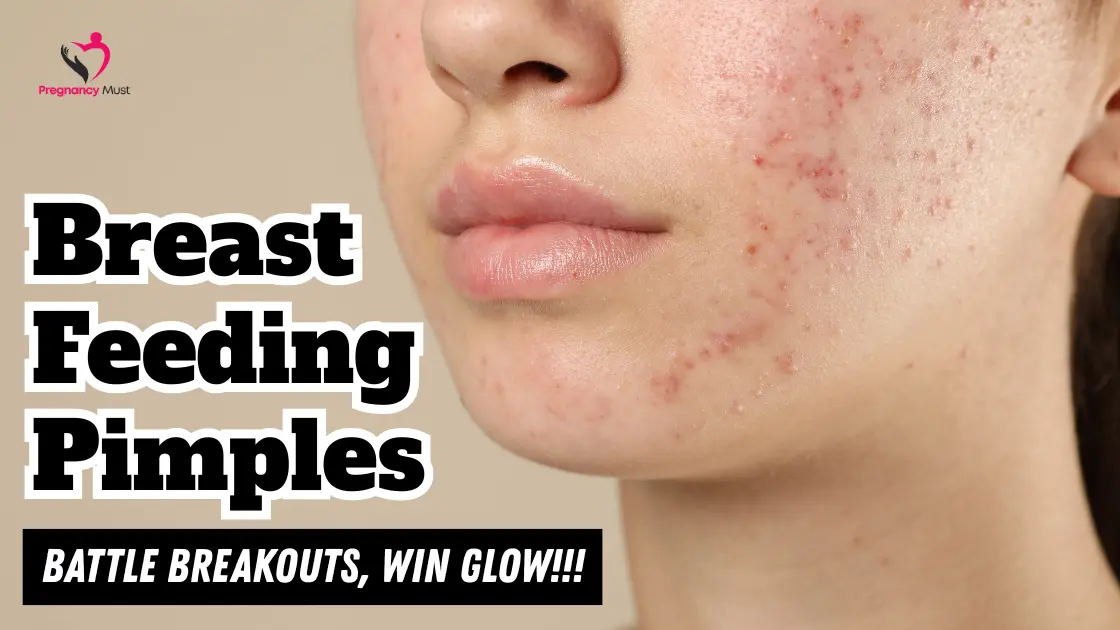Breastfeeding pimples can be a common skin concern for new mothers, especially when hormones fluctuate during postpartum recovery. It’s not unusual to develop acne-like blemishes around the chest, neck, or face during breastfeeding. In this article, we’ll dive deep into what causes pimples during breastfeeding, how to treat them, and effective prevention strategies to maintain clear skin while nursing your baby.
Table of Contents
What Are Breastfeeding Pimples?
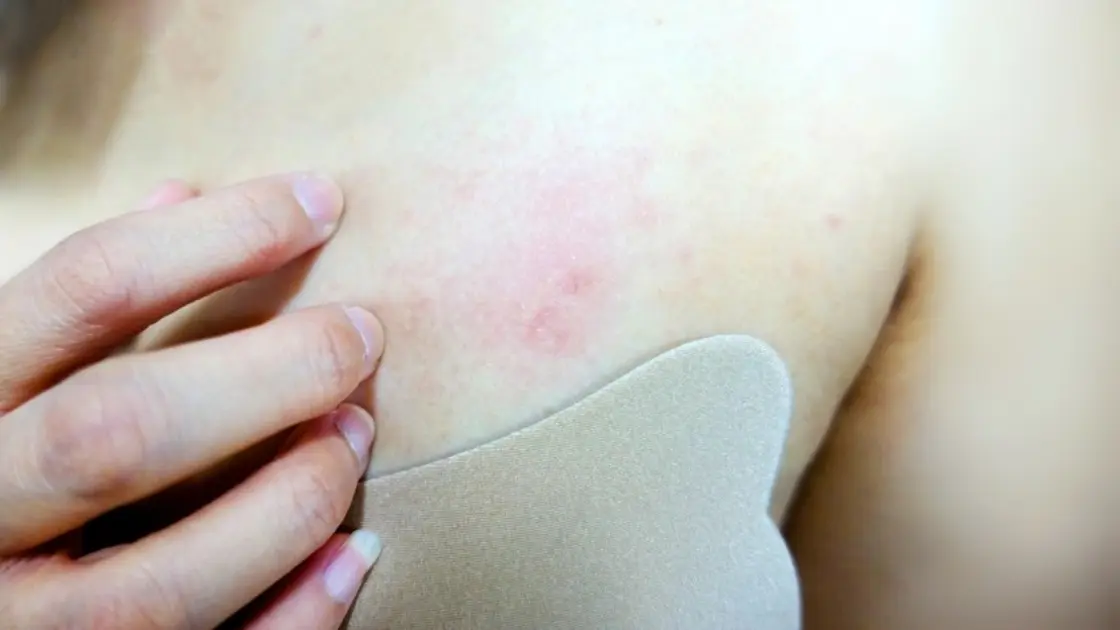
During breastfeeding, your body goes through a series of hormonal changes. Breastfeeding pimples occur when these hormonal fluctuations trigger overactive sebaceous glands. These pimples can appear anywhere, especially where sweat or oil builds up. Pimples on the breast can also result from irritation caused by breast pads or tight clothing.
What Causes Pimples During Breastfeeding?
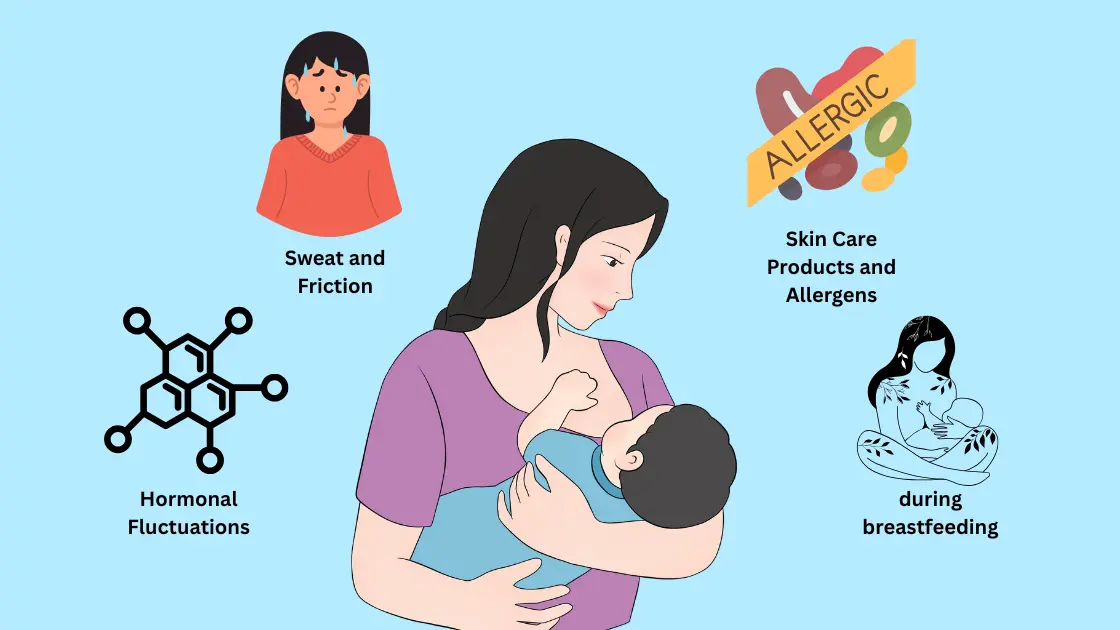
Understanding the root causes of pimples during breastfeeding is crucial in managing and preventing outbreaks. Several factors contribute to this skin issue:
Hormonal Fluctuations
After childbirth, prolactin levels rise to support milk production, and this surge in hormones can increase oil production in the skin. Excess oil can clog pores, leading to breastfeeding pimples. These hormonal changes, along with a decrease in estrogen and progesterone, can also make your skin more prone to breakouts, especially on the chest, jawline, and face.
Sweat and Friction
Breastfeeding can lead to increased sweating, especially around the chest area, which, combined with friction from tight clothing, nursing pads, or breastfeeding positions, can irritate the skin. This irritation can block pores and cause pimples. The friction can also exacerbate inflammation, making acne-like breakouts more likely to develop.
Skin Care Products and Allergens
The products you use during breastfeeding can impact your skin. Harsh chemicals, fragrances, or allergens in skincare items can cause irritation, dryness, or allergic reactions, triggering pimples during breastfeeding. It’s essential to use gentle, hypoallergenic skincare products to avoid worsening skin issues during this sensitive period.
Common Locations for Breastfeeding Pimples
While breastfeeding pimples can occur anywhere, the following areas are most commonly affected:
Breasts and Chest
The breast area is the most common place for pimples during breastfeeding, as sweat and milk residue can clog pores. This can lead to breakouts around the nipples and the surrounding skin, especially if not cleaned properly.
Neck and Jawline
Many new mothers develop pimples around the neck and jawline due to hormonal fluctuations and friction from breastfeeding. Tight clothing or constant contact with skin can irritate these areas, leading to acne-like breakouts.
Face and Chin
Hormonal imbalances during breastfeeding can also affect the face, particularly along the chin. Increased oil production from sebaceous glands can cause pimples, making it common to experience breakouts on the chin and surrounding areas.
How to Treat Breastfeeding Pimples
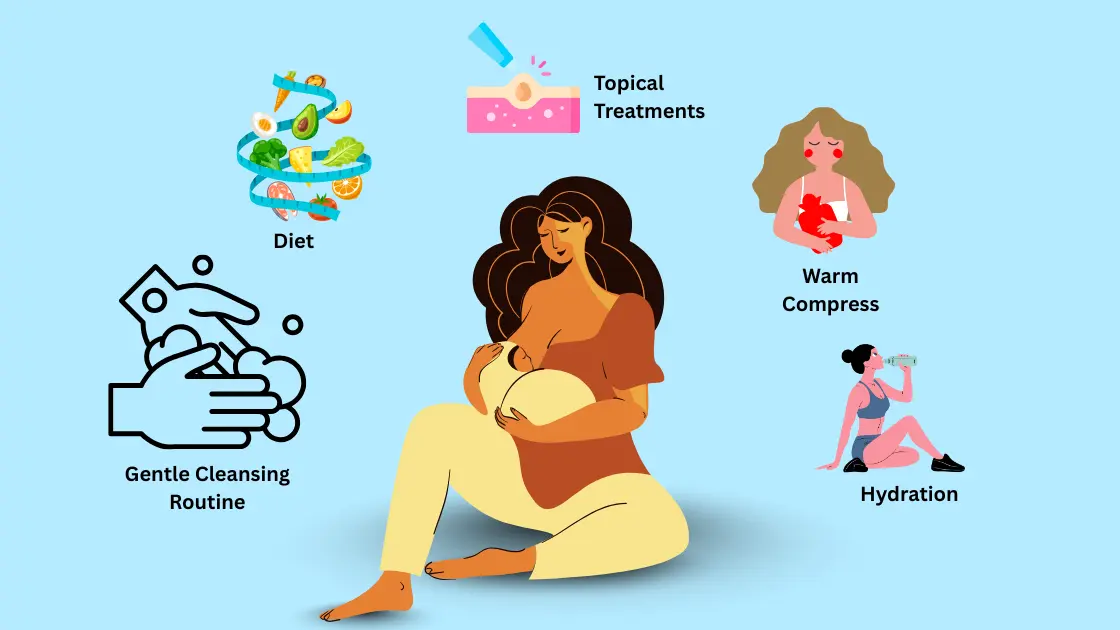
Effective treatment of pimples during breastfeeding requires a delicate balance, as you want to avoid anything that might harm you or your baby. Here are some safe and natural solutions:
Gentle Cleansing Routine
To keep your skin clean and healthy without aggravating breastfeeding pimples, use a mild, fragrance-free cleanser twice daily. Harsh cleansers can strip your skin of its natural oils, leading to dryness, irritation, and potential breakouts. A gentle cleanser will remove excess oil, dirt, and bacteria without causing further inflammation or dryness, keeping your skin balanced and clear.
Topical Treatments
Topical treatments like benzoyl peroxide or salicylic acid can help reduce acne, but always consult your doctor before applying them while breastfeeding. Some ingredients may be absorbed into your skin and affect your baby. Your doctor can recommend safe, effective products that won’t harm you or your little one, ensuring that you get the relief you need without any risks.
Warm Compress
A warm compress is an effective and soothing way to alleviate the discomfort of breastfeeding pimples. Applying a warm compress can help reduce inflammation, calm irritated skin, and open up clogged pores. This simple remedy can also encourage healing, especially for inflamed pimples, allowing for quicker recovery and reduced redness.
Hydration and Diet
Drinking plenty of water and eating a balanced diet rich in fruits, vegetables, and healthy fats can have a significant impact on your skin’s health. Hydration helps flush out toxins from your body, reducing the likelihood of breakouts. A nutritious diet full of vitamins and minerals supports your skin’s natural healing processes, keeping it nourished, clear, and glowing. Avoiding excessive sugar and processed foods can also help keep your skin clear.
Natural Remedies for Breastfeeding Pimples
Some natural remedies for pimples during breastfeeding can be highly effective. These include:
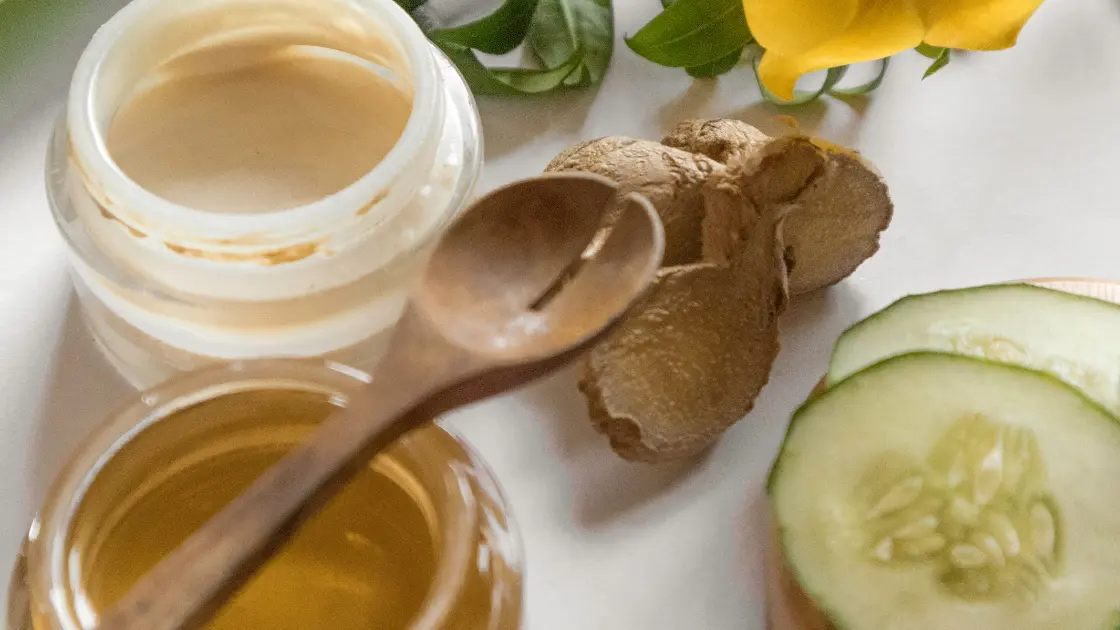
Tea Tree Oil
- Properties: Antibacterial, anti-inflammatory
- Benefits: Tea tree oil is highly effective for combating breastfeeding pimples due to its antibacterial properties. It helps reduce inflammation, calms redness, and prevents future breakouts by fighting bacteria.
- Application: Always dilute tea tree oil with a carrier oil, such as coconut or jojoba oil, to avoid skin irritation. Apply the diluted oil directly to the pimples using a cotton swab. Start by testing it on a small patch of skin to check for any allergic reactions before applying it to larger areas.
- Precaution: While tea tree oil is generally safe, it’s important to consult your healthcare provider to ensure it’s safe for use while breastfeeding, as it can be absorbed through the skin.
Aloe Vera Gel
- Properties: Soothing, anti-inflammatory
- Benefits: Aloe vera gel has natural soothing and healing properties. It calms irritated skin, reduces redness, and promotes the healing of breastfeeding pimples. Aloe’s cooling effect also helps to relieve the discomfort of inflamed pimples.
- Application: Apply fresh aloe vera gel directly to the affected areas. Let it sit for 15–20 minutes to allow the gel to penetrate the skin and promote healing. Afterward, rinse it off with lukewarm water. Aloe is a safe and gentle option, even for sensitive skin, and won’t cause harmful side effects.
- Precaution: Aloe vera is typically safe, but it’s still a good idea to do a patch test if you’re concerned about skin sensitivities.
Apple Cider Vinegar
- Properties: pH balancing, antibacterial, exfoliating
- Benefits: Apple cider vinegar acts as a natural toner by balancing your skin’s pH and eliminating bacteria that may contribute to breastfeeding pimples. The acidity helps to exfoliate dead skin cells, preventing oil buildup and clogged pores.
- Application: Mix apple cider vinegar with water in a 1:1 ratio to dilute its acidity. Using a cotton ball, apply the diluted vinegar to the affected areas. Leave it on for 5-10 minutes before rinsing off with lukewarm water. This helps to clear pimples, prevent new ones, and promote healthier skin.
- Precaution: Apple cider vinegar can be too harsh if used undiluted. Always test it on a small patch of skin to ensure you don’t experience irritation.
Coconut Oil
- Properties: Antibacterial, moisturizing
- Benefits: Coconut oil is known for its antibacterial properties, which can help treat breastfeeding pimples by eliminating bacteria. It also provides deep hydration, moisturizing dry skin that may result from breakouts.
- Application: Apply a thin layer of coconut oil to the affected areas, preferably before bed so that it can work overnight. Coconut oil hydrates the skin while helping to heal pimples and reduce inflammation.
- Precaution: While coconut oil is generally safe, it may be comedogenic (pore-clogging) for some skin types. It’s advisable to test it on a small patch of skin first to ensure it won’t cause additional breakouts.
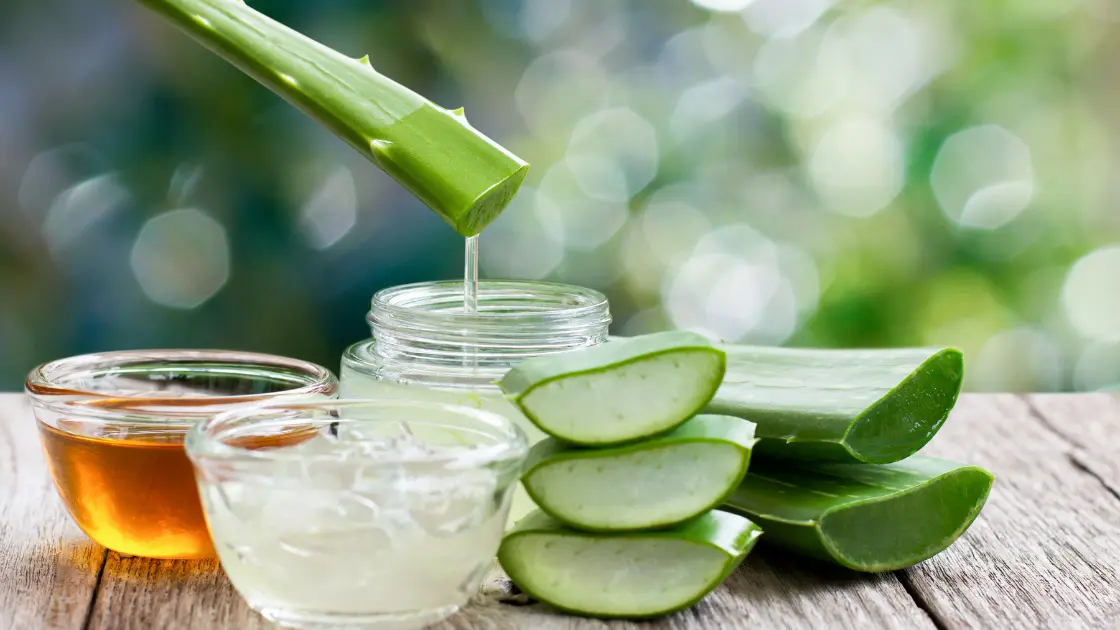
Honey
- Properties: Antibacterial, moisturizing, soothing
- Benefits: Raw honey is a natural antibacterial agent that can help fight the bacteria responsible for breastfeeding pimples. It also has moisturizing properties that help hydrate the skin and reduce the dryness caused by acne treatments. Honey is gentle and helps reduce inflammation.
- Application: Apply raw honey directly to the affected areas and leave it on for 10-15 minutes. Afterward, rinse off with lukewarm water. Honey is a simple, natural solution for soothing irritated skin.
- Precaution: Use raw honey to ensure you get its maximum benefits. Make sure you do a patch test to check for any allergic reactions.
Witch Hazel
- Properties: Astringent, anti-inflammatory
- Benefits: Witch hazel is a natural astringent that tightens the skin, reduces excess oil, and minimizes the appearance of pores. It also has anti-inflammatory properties that can help calm irritated skin and reduce pimples.
- Application: Apply witch hazel directly to the affected areas using a cotton ball or pad. It can be used as a natural toner, helping to balance oil production and reduce breakouts.
- Precaution: Witch hazel is generally safe, but if you have sensitive skin, it’s a good idea to test it on a small patch first to avoid irritation.
Green Tea
- Properties: Antioxidant, anti-inflammatory
- Benefits: Green tea is rich in antioxidants that help protect the skin from free radicals and inflammation. It helps reduce redness and swelling associated with pimples. Green tea also helps control excess oil production, which can prevent future breakouts.
- Application: Brew a green tea bag, allow it to cool, and apply it to your skin using a cotton ball. Alternatively, place cooled tea bags on the affected areas for 10-15 minutes for a soothing effect.
- Precaution: Green tea is generally safe for topical use, but if you have sensitive skin, it’s a good idea to perform a patch test first.
Lavender Oil
- Properties: Antibacterial, calming, anti-inflammatory
- Benefits: Lavender oil is known for its calming and anti-inflammatory properties. It helps reduce irritation, soothe stressed skin, and prevent further breakouts by calming inflammation and killing bacteria.
- Application: Dilute lavender oil with a carrier oil and apply it directly to pimples. You can also add a few drops to your daily skincare routine to prevent acne.
- Precaution: Always dilute lavender oil with a carrier oil to avoid skin irritation. Consult your healthcare provider before using essential oils while breastfeeding.

Oatmeal
- Properties: Soothing, anti-inflammatory
- Benefits: Oatmeal has natural soothing properties that help calm irritated and itchy skin. It reduces redness and inflammation, making it an excellent remedy for pimples during breastfeeding. Oatmeal also helps to hydrate and cleanse the skin, leaving it soft and smooth.
- Application: Colloidal oatmeal can be mixed with water to create a paste. Apply it directly to the skin and leave it on for 15-20 minutes, then rinse with warm water. This gentle remedy can help calm and heal pimples without causing any irritation.
- Precaution: If you have an allergy to oats, avoid using this remedy.
Preventing Pimples While Breastfeeding
Preventing breastfeeding pimples is the best way to maintain clear skin throughout your nursing journey. Here are some prevention tips:
Keep Skin Clean and Dry
After each breastfeeding session, it’s important to gently clean your skin to remove any sweat, milk residue, or oils that may have accumulated. Use a soft, mild cleanser to wash the area and allow your skin to dry properly. This prevents moisture from being trapped in your pores, which can lead to clogged pores and breastfeeding pimples. If you’re in a hurry, you can use a soft towel to blot the area dry, but ensure the skin is fully dry before dressing.
Wear Loose, Breathable Clothing
Opting for loose, breathable clothing made from natural fabrics like cotton can make a significant difference in preventing pimples during breastfeeding. Tight clothing can trap sweat, moisture, and bacteria, which can irritate your skin and clog your pores. Wearing loose-fitting clothes helps promote airflow to your skin, keeping it cool, dry, and free from irritation, which can help reduce the likelihood of breakouts.
Use Hypoallergenic Breast Pads
Hypoallergenic, breathable nursing pads are a great option for reducing irritation and preventing breastfeeding pimples around the nipple area. These pads are designed to absorb excess moisture from breast milk while allowing your skin to breathe. They also help prevent friction and chafing from tight or synthetic fabrics, both of which can cause pimples and skin irritation. Always choose nursing pads that are gentle on sensitive skin and free from harsh chemicals or fragrances.
When Should You See a Doctor?
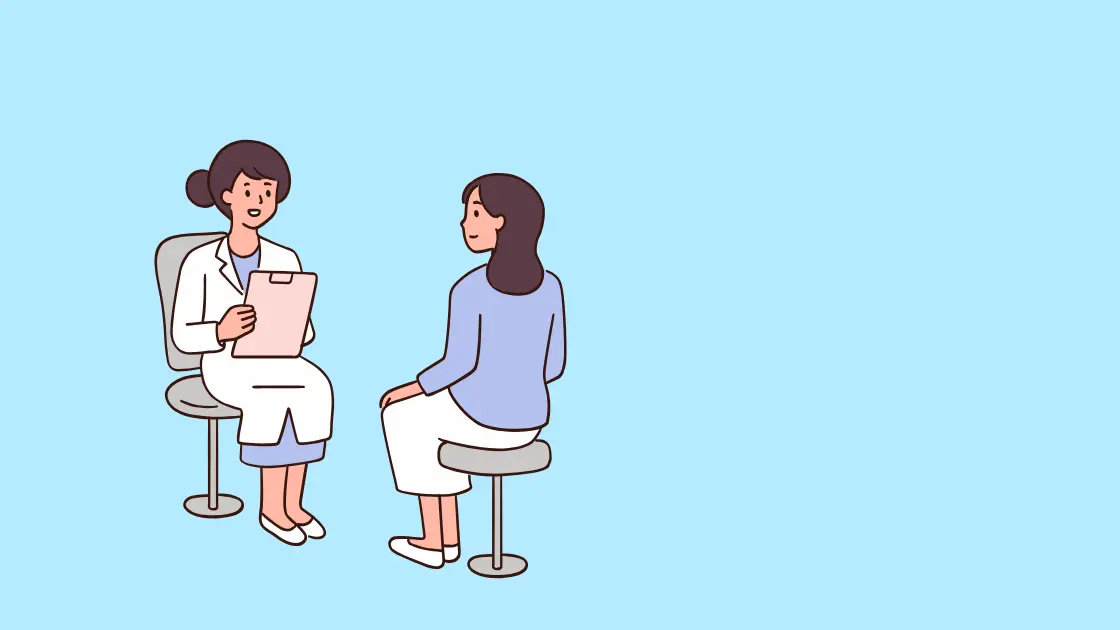
While pimples during breastfeeding are usually not a serious concern, certain signs may require medical attention. If your pimples become infected, spread rapidly, or cause significant pain, consult a healthcare provider for professional treatment options.
FAQ
1. Can I use acne treatments while breastfeeding?
Yes, but be cautious. Always choose safe, natural products and consult with your doctor to ensure they are safe for both you and your baby.
2. Can breastfeeding cause pimples on the face?
Yes, hormonal changes associated with breastfeeding can cause pimples during breastfeeding on your face, including the jawline and chin.
3. How can I prevent pimples on my breast while breastfeeding?
Keep your skin clean and dry, wear loose-fitting clothing, and choose hypoallergenic breast pads to minimize irritation and reduce the risk of pimples.
4. Is it safe to apply tea tree oil to pimples while breastfeeding?
Tea tree oil is generally considered safe, but it’s important to dilute it and test it on a small area first. Consult your doctor if you have concerns.
Final Thoughts
Breastfeeding pimples can be a common and frustrating issue for many new mothers. However, understanding the causes and treatment options can help you effectively manage your skin while enjoying the bonding experience of nursing. By following a consistent skincare routine, using safe natural remedies, and taking preventive measures, you can maintain clear, healthy skin throughout your breastfeeding journey.
Explore more on Pregnancy Must –
